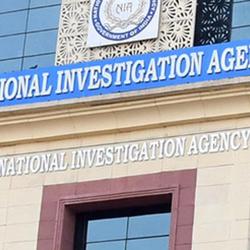The northeastern Indian city Guwahati must have contributed to the Black Carbon (BC) pollutants which is responsible for glacier melting in the Himalayas. Guwahati, the capital city of Assam, adjacent to Bhutan as well as the eastern Himalayas probably accelerated BC concentration to melt glaciers in the region, scientists say. The city is situated on the bank of the Brahmaputra and the BC pollutant emitted from the city effects the Brahmaputra Valley already. The Brahmaputra River Valley (BRV) of Southeast Asia recently has been experiencing extreme regional climate change in the recent years and the carbon emission in Guwahait, the largest city in the valley, is mostly responsible for the changing climate. A research team from Desert Research Institute, Reno, Nevada, USA with support from NASA calculated that, on an average, this high level of pollutants has given rise to a daily temperature increase of 2 deg Celsius. The research done by Rajan K. Chakrabarty, Mark A. Garro, Eric M. Wilcox and Hans Moosmüller reveals the role of black carbon (BC) aerosols (emitted from vehicles and other combustion sources) in the atmosphere of the region. Strong radiative heating due to wintertime black carbon aerosols in the Brahmaputra River Valley causes health hazards apart from rising temperature. It should be mentioned that further, these pollutants are out-flowing to the Himalayas (where they are melting the glaciers), and interfering with the Monsoon cycle, causing abrupt rainfall and droughts. It should be mentioned that the recent report of the Indian Association of Health Administrators, it says "There has been a rapid increase in Asthma cases in recent years in many parts of India. In Assam, 3% of the population was reported to be suffering from asthma. The reported level of asthma is 3278 per100000 population in Assam, which is higher than the level reported for India as a whole, which is 2468 per 100000 population." Mr Chakravarty ,the Assamese scientist of the research said in this regard that the people of Assam, although unaware of the ill-effects of extreme BC pollution, are still feeling the effects of it. Apart from Asthma, Assam has been experiencing all the symptoms associated with alarming levels of BC pollution since the past 5-6 years -- 1) severe droughts in Assam during 2005-06 and 2008-09 leading to ~$25M in losses due to crop failure; 2) extreme flash flooding during certain years and abnormality in monsoon patterns, and 3) strengthening of pre-monsoon tropical cyclonic systems.
A research team from Desert Research Institute, Reno, Nevada, USA with support from NASA calculated that, on an average, this high level of pollutants has given rise to a daily temperature increase of 2 deg Celsius. The research done by Rajan K. Chakrabarty, Mark A. Garro, Eric M. Wilcox and Hans Moosmüller reveals the role of black carbon (BC) aerosols (emitted from vehicles and other combustion sources) in the atmosphere of the region. Strong radiative heating due to wintertime black carbon aerosols in the Brahmaputra River Valley causes health hazards apart from rising temperature. It should be mentioned that further, these pollutants are out-flowing to the Himalayas (where they are melting the glaciers), and interfering with the Monsoon cycle, causing abrupt rainfall and droughts. It should be mentioned that the recent report of the Indian Association of Health Administrators, it says "There has been a rapid increase in Asthma cases in recent years in many parts of India. In Assam, 3% of the population was reported to be suffering from asthma. The reported level of asthma is 3278 per100000 population in Assam, which is higher than the level reported for India as a whole, which is 2468 per 100000 population." Mr Chakravarty ,the Assamese scientist of the research said in this regard that the people of Assam, although unaware of the ill-effects of extreme BC pollution, are still feeling the effects of it. Apart from Asthma, Assam has been experiencing all the symptoms associated with alarming levels of BC pollution since the past 5-6 years -- 1) severe droughts in Assam during 2005-06 and 2008-09 leading to ~$25M in losses due to crop failure; 2) extreme flash flooding during certain years and abnormality in monsoon patterns, and 3) strengthening of pre-monsoon tropical cyclonic systems.
Guwahati has one of the highest Black Carbon pollution levels in the world. The winter-time BC mass concentration observed in the city were higher than those measured in the mega cities of India and China, and much higher than in urban locations of Europe and USA. Mr Chakravarty, who hails from Guwahati, said that it is the rapid urbanization and poor environment quality control in Guwahati which is giving rise to such high BC levels. Guwahati is one of India's most rapidly growing cities since the last 10-12 years. For a rapidly urbanizing city like Guwahati with a million and half population, unfortunately, it doesn't have the infrastructure to sustain this growth. For example, there are just two major roads - GS road and the GNB road - connecting different parts of the city, and very poor public transportation system. The result is people prefer travelling in their private vehicles, which gives rise to severe traffic congestion and increased BC emissions from idling vehicles. With more and more people these days purchasing private vehicles, the energy consumption (fossil fuel) and BC emissions have increased tremendously. According to reports, more than 400,000 vehicles ply on Guwahati's roads every day, and approximately 70% of these vehicles don't have emission clearance certificates. So, we are looking at a situation here where majority of the vehicles plying on Guwahati roads could be emitting excessive amounts of BC and other very toxic pollutants.
The other reason which is affecting Guwahati is unplanned and open burning of solid waste disposal right in the city itself. People don't realize the amount of BC and toxic pollutants which are emitted from burning of waste disposal. In our study, we calculated the BC to increase the daily temperature of Guwahati by 2 degree Celsius -- which is pretty significant. Apart from affecting the climate, these pollutants are carcinogenic and have serious health-effects, he said. According to their research paper published last month in Geophysical Research Letters (VOL. 39, L09804, 5 PP., 2012, doi:10.1029/2012GL051148) Guwahati has one of the highest BC pollution levels in the world which is alarming. A week-long study using a micro-Aethalometer was conducted during January–February 2011 to measure black carbon (BC) aerosol mass concentrations in Guwahati (India), the largest city in the BRV region. Daily median values of BC mass concentration were 9–41 μgm−3, with maxima over 50 μgm−3 during evenings and early mornings. Median BC concentrations were higher than in mega cities of India and China, and significantly higher than in urban locations of Europe and USA. The corresponding mean cloud-free aerosol radiative forcing is −63.4 Wm−2 at the surface and +11.1 Wm−2 at the top of the atmosphere with the difference giving the net atmospheric BC solar absorption, which translates to a lower atmospheric heating rate of ∼2 K/d. To examine the possible outflow trajectories of these aerosols from Guwahati the conducted a 7 day study at different altitude levels from the surface. “The trajectories at all the different heights suggested outflow of pollutants to continental China and Tibet. Such outflow has been suggested to be a major cause of rapid melting of glaciers and permafrost” the researchers write in their reasearch paper.
We asked does the Black Carbon air pollution flow into the Himalayas from Assam and how did you establish this fact and its links with melting of Himalayan glaciers Mr Chakravarty said-“. Yes, the wind blows away the pollution from Assam into the Tibetan region and China. In the Tibetan region, these Black Carbon( BC) pollutants get deposited on the glaciers and/or reside in the atmosphere. Whether deposited on snow or residing in the atmosphere, BC particles absorb incoming sunlight and traps heat in the atmosphere. They act like an invisible blanket in the atmosphere and warms up the atmosphere.” When asked how did they find out that pollution from Guwahati goes to Tibet and China he said that using HYSPLIT computer model of NOAA -- which is a complete system for computing air parcel trajectories to and fro any location in the world. The trajectories at all the different heights suggested outflow of pollutants to continental China and its Tibet region. Such outflow has been suggested to be a major cause of rapid melting of glaciers and permafrost.
Replying to a question Mr Chakravarty said the wind blows away the pollution from Assam into the Tibetan region and China. In the Tibetan region, these Black Carbon( BC) pollutants get deposited on the glaciers and reside in the atmosphere. Whether deposited on snow or residing in the atmosphere, BC particles absorb incoming sunlight and traps heat in the atmosphere. They act like an invisible blanket in the atmosphere and warms up the atmosphere.
Guwahati has one of the highest BC pollution levels in the world which is alarming. People and Govt. of Assam should realize the problems regarding the high pollution levels. Since these pollutants are out-flowing to the Himalayas (where they are melting the glaciers), and interfering with the Monsoon cycle, causing abrupt rainfall and droughts the scientists warned again. If action is not taken immediately, it might be too late for the people of Assam as well as adjacent Bhutan and China.
[The report was based on findings of research works done by a team of scientists from Desert Research Institute, Nevada, USA led by Rajan Chakravarty, the Assistant Research Professor of that institute.
Informations and data provided by the research team show that black carbon (BC) air pollution at different cities in the world are less than Guwahati, whereas BC concentration in the capital city of Assam is around 40 micro gram per cubic m. The BC mass concentration in some cities are 19 -Delhi, 21 -Hydrabad, 6-12 -Kanpur, 26.6 -Kolkata, 7.5- 17.5 -Mumbai, 0.4-10.2 -Banglore, 21.6 -Xi’an China), 3.5-4.2 -Urban areas in Europe and 0.25-3 -Maryland (USA). In Guwahati the BC mass concentration is around 40 microgram per cubic m. It is much higher than any other place on the earth. The table provided by the scientists is attached below. If the truth and reality of Guwahati are denied it will encourage illegal activities pouring toxics to our environment and violation of all pollution control norms rather than taking timely measures.]
(Title changed! -- Ed.)
- Add new comment
- 68484 reads










Comments
Even though there exists a
Pages
Add new comment